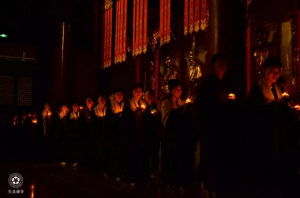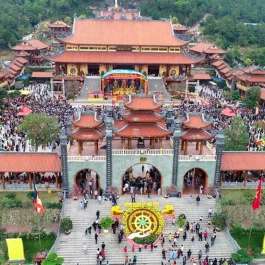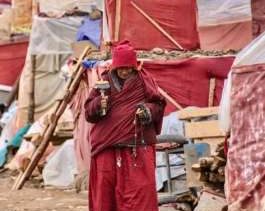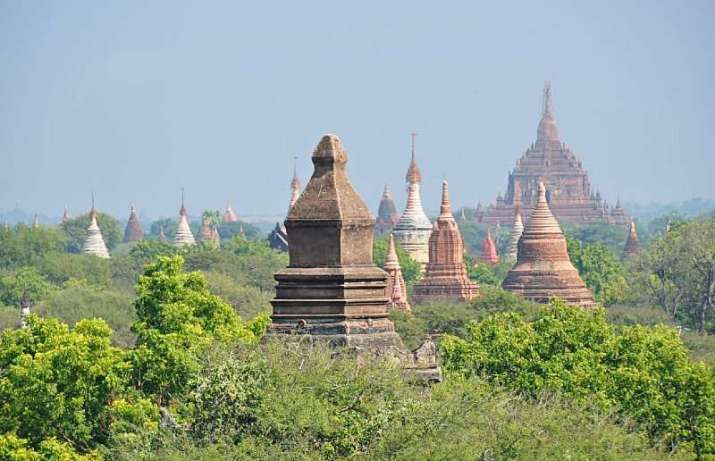
The Archaeological Survey of India (ASI) has resumed its work to restore pagodas in Bagan, Myanmar, a UNESCO World Heritage Site.* The work commenced in January** but was suspended in April as the SARS-CoV-2 novel coronavirus spread across the world. The pagodas were damaged in a major earthquake in 2016 and India’s Ministry of External Affairs (MEA) has pledged to fund their restoration.
Along with the pandemic, the region’s hot, humid summer weather helped push the pause in restoration work on the pagodas as the relative humidity in the region between June and September hampers masonry work.
“The effective working condition at Bagan is from around October to May every year,” an official said. (The Times of India)
Thousands of pagodas, temples, and other historic structures dot the planes of Bagan, which lies along the Irrawaddy River in western Myanmar. The city, formerly known as Pagan, was the capital of the Pagan Kingdom from the ninth century to the late 13th century. The period saw royal patronage of Theravada Buddhism, giving it a lasting foothold in the country, but the kingdom also welcomed forms of Mahayana and Vajrayana Buddhism, as well as Hinduism and indigenous animist traditions. The kingdom collapsed in 1297 and the population steadily declined over subsequent centuries.
Today there are more than 2,200 pagodas, temples, monasteries and other historical structures, which were built between the 11th and 13th centuries on the plains of Bagan. Almost 400 temples were destroyed and numerous other structures were damaged in a 6.8-magnitude earthquake on 24 August 2016.
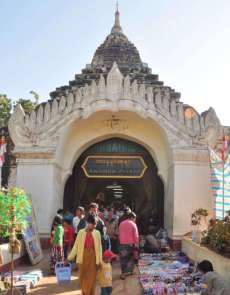
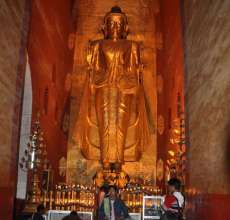
“A Memorandum of Understanding was subsequently signed between India and Myanmar for the conservation of earthquake-damaged Pagodas in Bagan in May 2018. The ASI identified 12 pagodas to be renovated in the first phase at (an expenditure of US$2,864,410), which was funded by MEA,” the official said. (The Times of India)
Among the structures already restored by the ASI is Ananda Temple, a prominent Buddhist pilgrimage site and a masterpiece of Mon architecture, built in the 12th century. Ananda Temple suffered damage in an earthquake in 1975, although it remained in operation and open to visitors until restoration work began in May 2012. The project was completed in 2018 at a cost of US$1,573,654.
Indian prime minister Narendra Modi visited the area in 2017, offering prayers at Ananda Temple and reasserting historical and cultural ties between India and Myanmar.
The resumption of work has also coincided with a recent visit from India’s foreign secretary Harsh Vardhan Shringla and chief of army staff General MM Naravane, who spent two days meeting officials there, including Aung San Suu Kyi, over a series of bi-lateral issues, including tackling the ongoing COVID-19 pandemic.
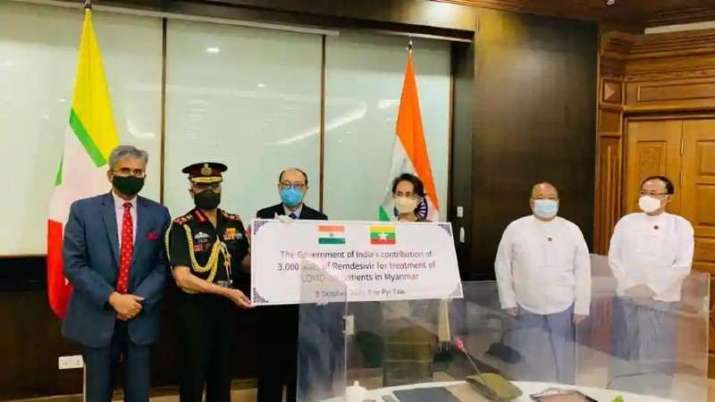
According to official records, the first confirmed cases of COVID-19 in Myanmar were detected on 23 March. Since then, the country appeared to be successfully fighting the pandemic until September, when cases began to rise rapidly from fewer than 1,000 total confirmed cases to 21,433 as of 7 October, with 510 confirmed deaths due to the disease.
* UNESCO Declares Myanmar’s Ancient Buddhist Temple City Bagan a World Heritage Site (Buddhistdoor Global)
** Archaeological Survey of India Begins Restoring Five Buddhist Pagodas in Bagan, Myanmar (Buddhistdoor Global)See more
India funds restoration of pagodas in Myanmar (The Times of India)
Foreign Secretary, Army Chief to visit Myanmar (The Tribune)







